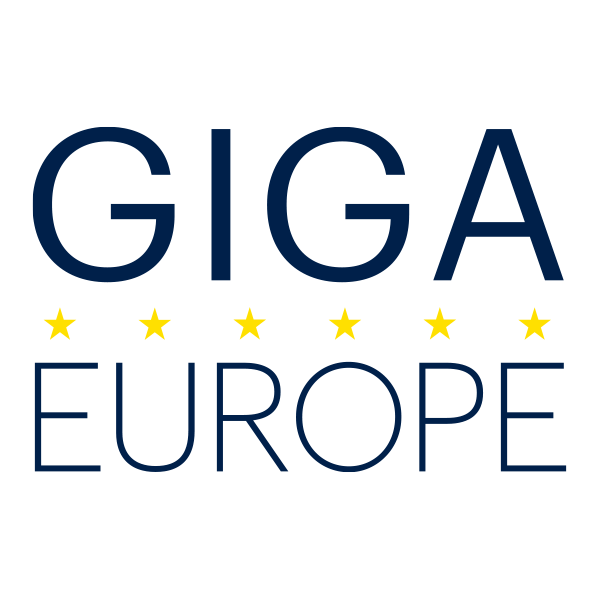EU Connectivity Needs Fast Rollout – Policies Must Aid Objectives
by GIGAEurope
Brussels – 13 November 2023
When the European Commission drafted the Gigabit Infrastructure Act (GIA) proposal, it affirmed the reality that the world is experiencing a shift within the electronic communications sector. Connectivity is increasingly linked to achieving the EU’s socioeconomic and climate goals. Europe must accelerate the process of bringing homes and businesses ultra-fast connectivity – and do so more efficiently.
The GIA is intended to be a meaningful step towards accelerating permit granting procedures, maintaining investor confidence, and reducing the costs of rolling out Gigabit connectivity. As mentioned in the proposal, tacit approvals will significantly reduce the time it takes to deploy very high-capacity networks (VHCN). A swift adoption of this Regulation is vital as connectivity providers work at pace to help the EU reach the Digital Decade target of ensuring that all Europeans have access to high-speed internet service.
In a series of editorials and industry statements, the sector has consistently expressed its support for the stated intention of the GIA, while raising concerns about the Regulation being diluted if lawmakers stray from its core objectives.
It is fundamental that no Gigabit-capable technology is favoured over another.
The preferential treatment given to ‘fibre-ready’ networks in the GIA fails to capture the full breadth of Gigabit technology and risks scuppering the EU’s ability to reach the connectivity targets by 2030. Technology neutrality is an established principle within the EU regulatory framework. The ability of both fibre and DOCSIS 3.1 to deliver on the Gigabit connectivity goal is clearly reflected in the Digital Decade agenda. A recent Communication from the Commission, Digital Decade Cardinal Points, reports that DOCSIS network coverage is strong and stable.
When defining very high-capacity networks the European Electronic Communications Code speaks of network performance. This creates a system that allows telecommunications companies to compete on the quality of user experience instead of a certain type of technology. Most consumers are focused on price and quality. They have little interest in the technological details and seek the best experience possible. Deviating from the technology neutrality principle will unintentionally distort competition and hinder some operators from serving specific buildings.
Giving fibre preferential treatment could also compromise consumer welfare, by undermining consumer choice between Gigabit technologies.
It steers customers towards a certain operator’s services in a manner that can be misleading by promulgating the misunderstanding that other Gigabit technologies are not future-proof. Fibre, cable (DOCSIS 3.1 and DOCSIS 4.0), and 5G (all being VHCN) are Gigabit-ready and future-proof. They are capable of supporting AI tools, digital twins, IoT technologies in homes, cloud services for businesses, and enabling smart cities well beyond 2030.
Delivering Gigabit connectivity everywhere will depend on connectivity providers’ ability to use all available Gigabit technologies. Focusing on network quality, not the type of technology, avoids inconvenient delays due to unnecessarily dismantling and replacing perfectly capable resources – without offering a noticeably better user experience. It also mitigates the risk of diverting valuable resources that could be invested towards new VHCN deployments.
GIA is designed to protect current investment plans, while encouraging the future investments required to meet the Digital Decade targets.
In addition to a swift adoption, policymakers and regulators must keep the focus of this policy tool squarely on its fundamental objectives – reducing deployment costs and accelerating the process of giving Europe the network makeover and connectivity service it deserves. Sizeable investments are required. The Commission estimates that additional investment needed to ensure full Gigabit coverage across the EU (and 5G coverage in all populated areas by 2030) is likely more than €200 billion.
The proposal to ban intra-EU communications surcharges would have the opposite effect. Industry appreciates the concern around intra-EU communications yet is concerned about the adoption of a proposal that could considerably impact the sector without the justification of a market failure. In 2021, Analysys Mason estimated a circa €580 million negative impact on revenues in a 12-month period should a ban on intra-EU communications surcharges be imposed.
It could also politicise and delay the adoption of important legislation when the EU needs the best possible instrument for facilitating network deployment. We are, therefore, proponents of an alternative approach. The current caps on intra-EU communications surcharges are scheduled to expire in May 2024. This presents an opportunity for the European Commission to review the current state and propose a way forward. A new proposal could include prolonging current caps which would create space for further reflection.
Like the GIA, the telecommunications sector sees the Digital Networks Act (DNA) as an opportunity to address broader issues in the sector.
A summary report of the Future of Connectivity Public Consultation provides data to validate perceived industry trends and challenges. In a statement announcing the DNA and its aim, Commissioner Thierry Breton recognised key regulatory barriers that Europe’s digital economy faces. Lawmakers must revisit policies that relate to spectrum, consolidation, and fragmentation that pose a risk to a digital single market, and could hinder investment and innovation.
Industry has demonstrated that it is an active contributor to the EU’s socioeconomic objectives and connectivity targets while keeping consumer welfare in mind. Eurostat data reveal that the price of telecommunications services has continued to decrease since 2006. Companies participate in a tight market where competition has lowered the price of services for European customers – even as demand for data and the cost of modernising secure ultra-fast networks is increasing.
Telcos should be viewed as good-faith and critical contributors, at a time when there is greater pressure on investments. Just as we welcome the Commissioner’s willingness to use all policy tools available, industry supports a joined-up approach that leverages all of the economic tools and technologies at the private sector’s disposal.
The @EU_Commission report on the Future of Connectivity Consultation provides data to validate perceived industry trends and challenges. Lawmakers must revisit policies that relate to spectrum, consolidation, and fragmentation. These are barriers to a true #digital single market. pic.twitter.com/uRS48vEUWn
— GIGAEurope (@GigaEurope) November 22, 2023
We are experiencing a shift within the electronic communications sector. #Connectivity is increasingly linked to achieving the EU’s socioeconomic and climate goals. 🇪🇺Europe must accelerate the process of bringing homes and businesses ultra-fast connectivity.#5gadvanced #IoT pic.twitter.com/3LcqsGPUxg
— GIGAEurope (@GigaEurope) November 21, 2023
RELATED ARTICLES

Do We Have All the Right Networks for the Future?

Be Courageous, Confident, & Curious: Insights for Women in ICT

On the Digital Highway – Destination: a Competitive Europe

Interconnecting the Connectivity Talks

The EU made the case for digital – now skills must follow

Precision Agriculture: Leveraging digital tools to respond to a dual imperative

Enabling the Enablers: A Path to Europe’s Green Transition

How to ensure no European is left behind?

How connectivity can help bridge the digital trust gap

Capturing Europe’s Connectivity Momentum

